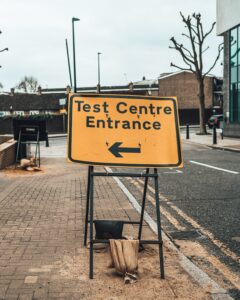While private schools weigh several elements when evaluating student candidacy, standardized tests, like HSPT, are often essential to competitive admissions. This post dives into the HSPT and answers some common questions about this assessment.
So, what is the HSPT?
Catholic high schools generally use the HSPT (High School Placement Test) as part of their 9-12 admissions process. (Applicants take the exam in the 8th grade.) The exam is about two hours and thirty minutes and is composed of five multiple-choice sections, with 300 questions in total:
- Verbal (16 minutes, 60 questions)
- Quantitative Reasoning (30 minutes, 52 questions )
- Reading Comprehension (25 minutes, 62 questions)
- Mathematics (45 minutes, 64 questions)
- Language Skills (25 minutes, 60 questions)
The Math and Quantitative sections require knowledge of basic math skills, specifically arithmetic, exponent rules, order of operations, math vocabulary, and some geometry. Algebra is helpful for students to know but is optional.
The Verbal, Reading, and Language sections comprise about an hour of the overall exam time. The Verbal section is vocabulary-based, utilizing synonyms, antonyms, sentence completions, analogies, and logic questions. The reading section also contains a small vocabulary section and several short passages with comprehension questions. The Language section has no vocab component and focuses solely on grammar and spelling rules.
How does the HSPT differ from the ISEE?
Independent and private schools are more likely to request the ISEE or the Independent School Entrance Exam. While the assessments measure comparable skills, the ISEE focuses more on cumulative academic knowledge, such as fluency and comprehension, and includes an essay component. The HSPT is scored similarly to the SAT, uses a 200- to 800-point scale, and results are compared with the annual tested population.
What else should I know? Like, where is the HSPT administered? What about scholarships?

Courtesy of Unsplash
Unlike other entrance exams, applicants are permitted to test once at each school to which they apply. This exam does not penalize for incorrect responses, so guessing is highly encouraged. Since the pool of candidates is highly competitive, students should aim for higher-than-average (500 out of 800) scores.
Assessments are administered on-site at the student’s top-choice school. Students may qualify for merit-based scholarships; terms and requirements vary from institution. Some may offer full or partial funding based on percentile; others may select the top scorers that year. Often, schools have GPA or other requisites besides the HSPT score.
How should my child prep?
Many students will utilize some form of test prep to raise their scores into a competitive range. Ideally, applicants should begin prepping far ahead of time to target their needs. A diagnostic exam establishes a baseline and is thus an excellent tool for determining an appropriate study plan. At Mundo, we offer free diagnostics and individualized study plans to aid students in their academic goals. Please check out our other blogs or contact us for additional information!
